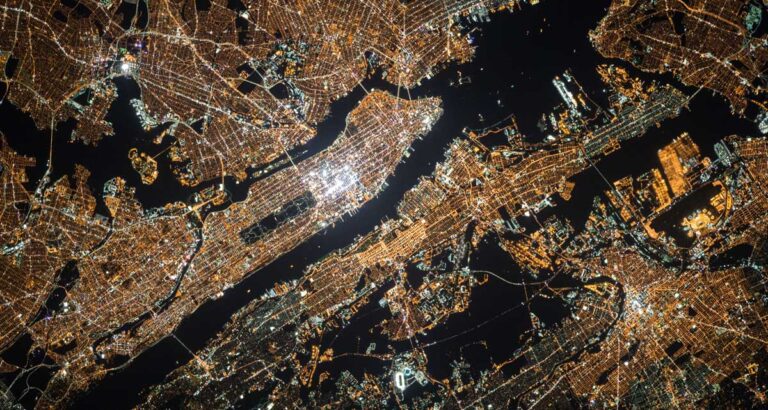Google Maps to suggest the most eco-friendly routes you can take to reduce your carbon footprint
In an era where consumers are increasingly aware of their impact on the environment and vice versa, it is of no surprise to witness brands effortlessly embedding sustainability into the core of their products and operations. Backed with a commitment to fight climate change, Google Maps is pushing the boundaries of ‘what a map can do’ with over 100 AI-powered updates this year. Part of the array is the ‘eco-friendly navigation’ feature—which will pave the greenest way to your local destination and global future.
Through a recent blog post, Google Maps unveiled its ‘eco-friendly navigation’ feature which will suggest drivers the most eco-friendly route they can take to reduce their carbon footprint. These directions would feature the same Estimated Time of Arrival (ETA) as that of the fastest route by leveraging insights from the US Department of Energy’s National Renewable Energy Lab. The new routing model optimises these ‘eco-friendly’ directions (marked with a green leaf icon) based on fuel consumption—taking factors like road incline and traffic congestion into account. Such road grade data comes from Google’s own Street View cars along with aerial and satellite imagery.
When launched, the default route on the app will be set to the ‘eco-friendly navigation’ option unless users choose to opt-out of it by adjusting their preferences. In cases where alternative routes are significantly faster, Google Maps will let you compare the relative CO2 impact between the routes to help you choose.
We’re on a CO2 emission mission.
— Google Maps (@googlemaps) April 2, 2021
Soon on Maps, you’ll be able to compare the CO2 impact of routes and select the one that’s more eco-friendly ♻️ → https://t.co/C77e6DQg24 pic.twitter.com/R3oqT0n7AG
“What we are seeing is that for around half of routes we are able to find an option more eco-friendly with minimal or no time-cost tradeoff,” said Russell Dicker, a director of product at Google in a conference. Siddharth Pathak, a partner at consultancy firm Kearney, labels the feature “a great example of three trends coming together—data, sustainability and consumer choice.” In an interview with the BBC he praised the potential of the feature for “pushing those on the fence to make a deliberate choice of speed over sustainability and often cost.”
As part of Google’s sustainability commitment made in September 2020 to help one billion people take action to reduce their environmental footprint, the ‘eco-friendly navigation’ feature will roll out in the US on Android and iOS later this year, with the rest of the world following suit. From June, however, Google Maps intends to kick off the feature by helping drivers in Germany, Netherlands, France, Spain, and the UK navigate through ‘low-emission zones’.
“From Amsterdam to Jakarta, various cities around the world have established low emission zones—areas that restrict polluting vehicles with specific emissions stickers—to help keep the air clean,” Google’s blog post explained. To support these efforts, Google Maps is working on alerts to help drivers better understand these zones. “You can quickly know if your vehicle is allowed in the area, choose an alternative mode of transportation, or take another route.”
However, if you are an avid cyclist or travel enthusiast who doesn’t live in the US to first-handedly experience ‘eco-friendly navigation’ or any of the countries mentioned to support low-emission zones, Google Maps has another feature in the works set to be introduced globally in the coming months. Improving upon existing features to promote sustainable modes of transport, users will soon be able to get a comprehensive view of all eco-friendly routes and transportation modes available to their destination. They can then compare how long it will take to reach via car, transit or bike without toggling between tabs.
Using advanced machine learning models, Google Maps will further prioritise the user’s preferred modes of travel automatically and even boost modes that are popular in their city. “For example, if you bike a lot, we’ll automatically show you more biking routes. And if you live in a city like New York, London, Tokyo, or Buenos Aires where taking the subway is popular, we’ll rank that mode higher,” the blog concluded.
The latest Google Maps updates are undoubtedly some of the much-awaited ones. Given the fact that transportation is the largest source of carbon emissions in the US further aids its coveted status. “If carbon emissions are to be lowered in the US, drivers’ behavior will have to change,” said Elizabeth Irvin, a senior transportation analyst at the Union of Concerned Scientists. In an interview with CBS News she outlined the importance of prioritising this change in frequent drivers.
At a time where consumers value the survival of both themselves and the planet, such innovations that effortlessly embed sustainability into products prove essential—nudging consumers into accepting a more environmentally sound behaviour, one step at a time.





